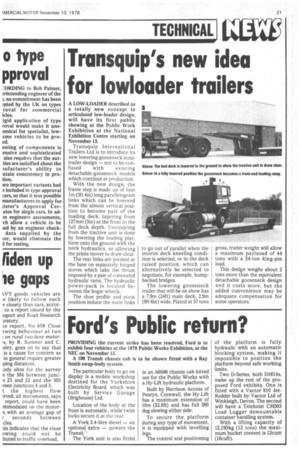Tronsquip's new idea for lowloader trailers
Page 23

If you've noticed an error in this article please click here to report it so we can fix it.
A LOW-LOADER described as a totally new concept in articulated low-loader design, will have its first public showing at the Public Work Exhibition at the National Exhibition Centre starting on November 13.
Transquip International Trailers Ltd is to introduce its new lowering gooseneck semitrailer design — not to be con fused with existing detachable-gooseneck models which continue in production.
With the new design, the frame step is made up of four lm (3ft 4in) long parallelogram links which can be lowered from the almost vertical position to become part of the loading deck, tapering from 127mm (Sin) at the front to the full deck depth. Uncoupling from the tractive unit is done by lowering the loading platform onto the ground with the neck hydraulics, so allowing the prime mover to draw clear.
The rear links are pivoted at the base on separately hinged stoves which take the thrust imposed by a pair of concealed hydraulic rams. The hydraulic power-pack is located between the bogie wheels.
The shoe profile and pivot position induce the main links to go out of parallel when the interim deck kneeling condition is selected, or in the deck raised position, which can alternatively be selected to negotiate, for example, humpbacked bridges.
The lowering gooseneck trailer that will be on show has a 7.9m (24ft) main deck, 2.9m (9ft 6in) wide. Plated at 57 tons gross, trailer weight will allow a maximum paylaoad of 44 tons with a 24-ton king-pin load.
This design weighs about 2 tons more than the equivalent detachable gooseneck design and it costs more, but the added convenience may be adequate compensation for some operators.






















































































































































